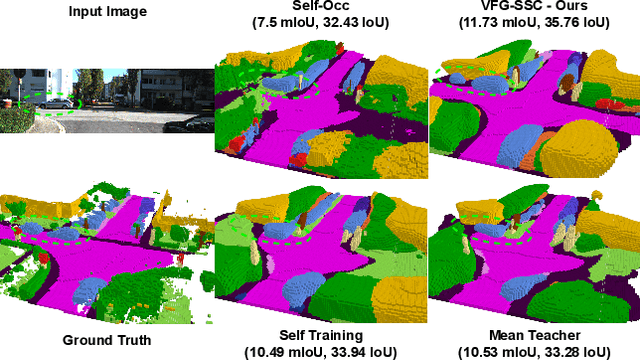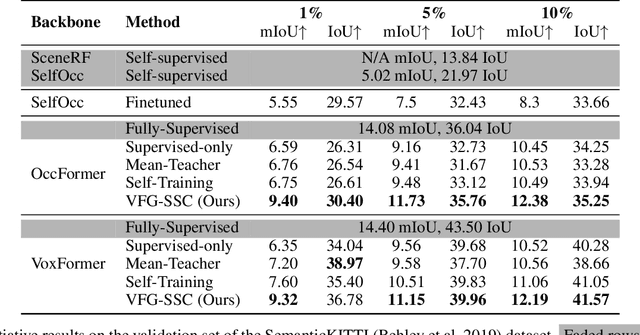Semi-supervised 3D Semantic Scene Completion with 2D Vision Foundation Model Guidance
Paper and Code
Aug 21, 2024



Accurate prediction of 3D semantic occupancy from 2D visual images is vital in enabling autonomous agents to comprehend their surroundings for planning and navigation. State-of-the-art methods typically employ fully supervised approaches, necessitating a huge labeled dataset acquired through expensive LiDAR sensors and meticulous voxel-wise labeling by human annotators. The resource-intensive nature of this annotating process significantly hampers the application and scalability of these methods. We introduce a novel semi-supervised framework to alleviate the dependency on densely annotated data. Our approach leverages 2D foundation models to generate essential 3D scene geometric and semantic cues, facilitating a more efficient training process. Our framework exhibits notable properties: (1) Generalizability, applicable to various 3D semantic scene completion approaches, including 2D-3D lifting and 3D-2D transformer methods. (2) Effectiveness, as demonstrated through experiments on SemanticKITTI and NYUv2, wherein our method achieves up to 85% of the fully-supervised performance using only 10% labeled data. This approach not only reduces the cost and labor associated with data annotation but also demonstrates the potential for broader adoption in camera-based systems for 3D semantic occupancy prediction.
 Add to Chrome
Add to Chrome Add to Firefox
Add to Firefox Add to Edge
Add to Edge